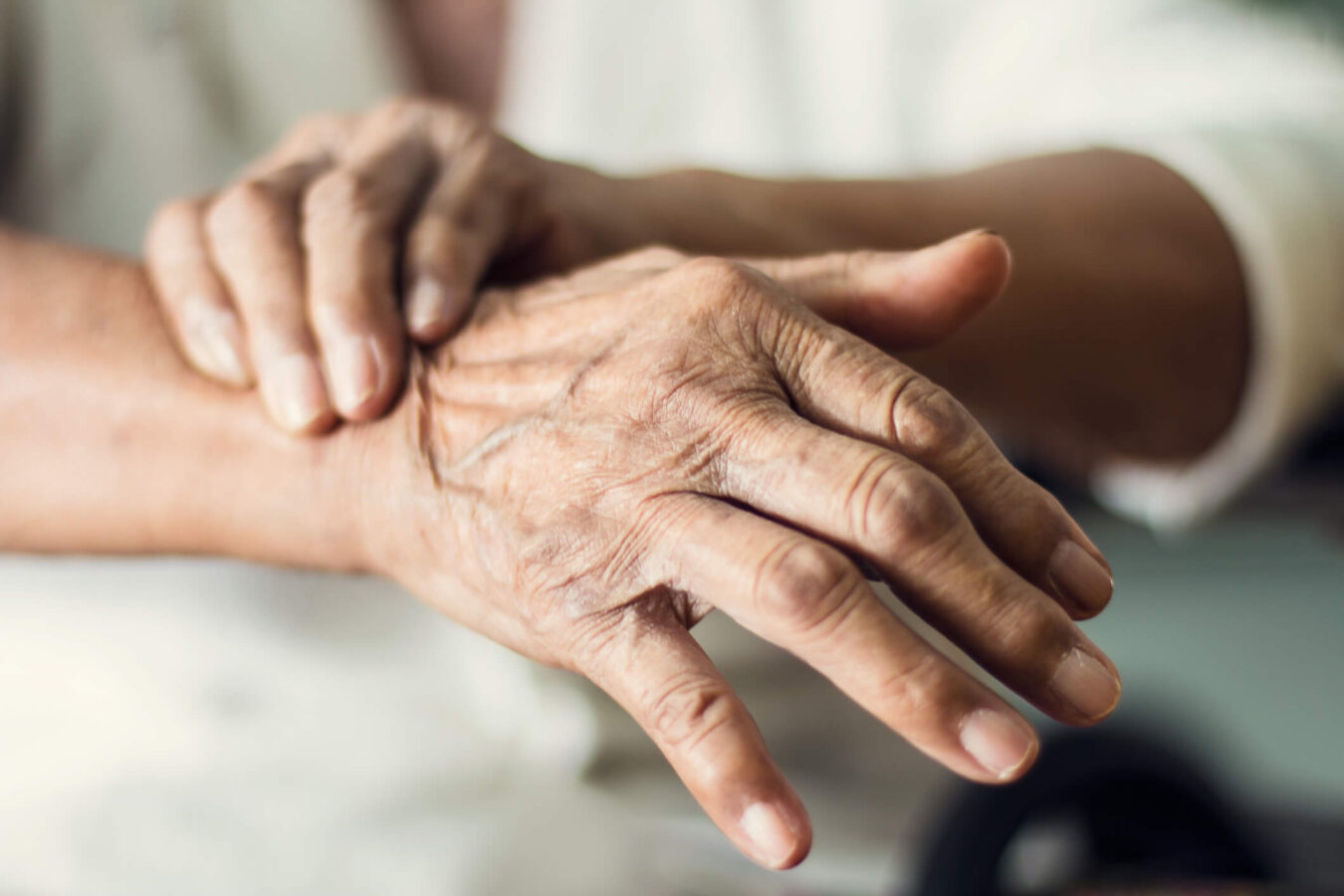
Medically reviewed by Misty Seidenburg
An estimated 58.5 million adults in the U.S. have some form of arthritis. If you are one of them, you may notice your joint pain increasing as the temperatures drop. Although researchers have not yet established a definitive relationship between cooler weather and an increase in the intensity of arthritis symptoms, many believe it does exist.
Let’s explore the theories behind this connection and some simple ways to relieve body pain due to cold weather this winter.
The term arthritis refers to any of the 100+ conditions that cause joint swelling, pain, and inflammation. Osteoarthritis, rheumatoid arthritis (RA), gout, and fibromyalgia are among the most frequently diagnosed types of arthritis.
We know less about what causes many forms of arthritis than we do about common risk factors for these diseases. Infection, injuries, obesity can contribute to arthritis. Age and gender also play a role in who develops joint disease, as it seems to be more common in women and older adults.
Arthritis symptoms vary depending on the joints affected and the severity of the condition. For some individuals, a single joint is painful. Others experience pain throughout the body. Arthritis cannot be cured, but it can be managed to help patients decrease pain and improve function, mobility, and overall quality of life.
Can you predict the weather based on how your joints feel? You might be on to something.
Extensive research has been conducted to determine how and why cold weather causes body pain. And while we haven’t yet confirmed the link with scientific evidence, one study on the phenomenon does point to causal link between joint pain and weather changes.
Some theories on why cold weather causes joint pain include:
The weight of air changes in certain weather conditions. When it drops in cold weather, the joints expand slightly, potentially causing weather-related pain.
Individuals with previous injuries who developed adhesions, scarring, or inflammation may have hypersensitivity in the nerves in and around those areas during cold weather.
Synovial fluid is liquid that lubricates the joints and acts as a shock absorber during motion. Cold weather causes it to thicken which can impede the smooth flow of joints.
Nearly 9 in 10 adults say their physical activity decreases in the winter. But for people with arthritis, movement is medicine. Gentle, low-impact exercise can reduce joint pain improve mobility and function in affected joints.
Winter is approaching and the temperatures have already dropped in some parts of the country. But you don’t have to spend the next few months suffering with joint pain. Try these practical tips to feel better in the colder weather.
In cold weather, focus on keeping warm to prevent or lessen pain. Try an electric blanket, flannel sheets, and warm clothing and footwear. Bundle in layers and use thick gloves and a scarf when you go outside. When you return from outdoors, take a warm bath or shower to raise your body temperature.
If you are prone to swelling in your joints, get a head of it on cold, winter days. Snug gloves, braces, elastic bands, and compression gloves and socks exert mild pressure on affected joints to reduce swelling.
Exercise is shown to lower pain for people with arthritis. But it’s easy to lose motivation when it’s frigid outside and sitting on the couch under a cozy blanket seems like a better option. But we promise, once you get moving, you’re going to feel better—and not just in your joints.
Exercise releases those feel-good endorphins that will improve your mood which is also important for anyone experiencing chronic pain. Just remember—some activities are not recommended for those with joint damage.
Choose gentle, low-impact exercise approved by your healthcare provider and physical therapist for all the benefits of activity without the risk of injury.
If you are dreading another achy winter full of arthritis flare-ups, know that help is available. Physical therapy for arthritis helps patients exercise in a safe, controlled environment to prevent further damage to painful joints.
And while stretching and strengthening are key components of arthritis management programs, the benefits of physical therapy go well beyond exercise. Physical therapists provide hands-on manual therapies like massage, joint mobilization, and soft tissue mobilization to improve joint function, mobility, and range of motion.
They teach patients how to adapt and adjust to any physical limitations and share healthy lifestyle guidance like quitting smoking and eating a nutritious diet for good bone health. Physical therapy patients receive exercise programs they can do at home and self-management techniques to prevent and manage cold-weather pain and inflammation.
Do you want to know more about how physical therapy can help you feel and move better this winter? Find a physical therapy clinic near you.